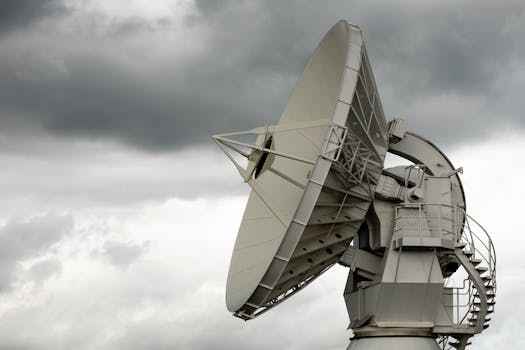GEO Satellites: Unlocking the Power of Geostationary Orbit
GEO satellites, or Geostationary satellites, are a type of satellite that orbits the Earth at an altitude of approximately 36,000 kilometers, situated above the equator. At this height, they can maintain a stationary position relative to a fixed point on the Earth’s surface, allowing for continuous coverage of a specific region. The focus keyword, GEO satellites, is a crucial aspect of modern telecommunications, navigation, and weather forecasting.
The concept of GEO satellites has been around since the 1940s, but it wasn’t until the launch of the first geostationary satellite, Syncom 2, in 1963 that the technology began to take shape. Since then, numerous GEO satellites have been launched, providing a wide range of services, including telecommunications, broadcasting, weather forecasting, and navigation.
Applications of GEO Satellites
GEO satellites have a multitude of applications, making them an essential component of modern life. Some of the key applications include:
Telecommunications: GEO satellites provide a means of transmitting data, voice, and video signals over long distances, making them ideal for international communications, remote connectivity, and emergency services. They also play a critical role in the transmission of television signals, allowing for global broadcasting and coverage of events.
Navigation: GEO satellites are used in navigation systems, such as GPS, to provide location information and timing signals. These signals are used to determine the exact position, velocity, and time of a receiver, making them essential for aviation, maritime, and land-based navigation.
Weather Forecasting: GEO satellites are used to monitor the Earth’s weather patterns, providing critical data for weather forecasting and climate monitoring. They can detect changes in cloud patterns, temperature, and humidity, allowing for more accurate weather forecasts and warnings.
Benefits of GEO Satellites
The benefits of GEO satellites are numerous, making them a vital component of modern technology. Some of the key benefits include:
Global Coverage: GEO satellites can provide coverage of the entire Earth, making them ideal for global communications, navigation, and weather forecasting.
High-Speed Data Transfer: GEO satellites can transfer data at high speeds, making them suitable for applications that require rapid data transfer, such as video conferencing and online gaming.
Reliability: GEO satellites are relatively low-maintenance and can operate for extended periods, making them a reliable means of communication and data transfer.
The Technology Behind GEO Satellites
The technology behind GEO satellites is complex and involves a range of disciplines, including aerospace engineering, telecommunications, and computer science. Some of the key components of GEO satellites include:
Transponders: These are the devices that receive and transmit signals, allowing for communication between the satellite and the Earth.
Antennas: These are used to transmit and receive signals, and can be designed to provide specific coverage patterns and frequencies.
Power Systems: GEO satellites require a reliable source of power, which is typically provided by solar panels and batteries.
Propulsion Systems: These are used to maintain the satellite’s position and altitude, and can include thrusters and ion engines.
Conclusion
In conclusion, GEO satellites play a vital role in modern telecommunications, navigation, and weather forecasting. Their ability to provide global coverage, high-speed data transfer, and reliability makes them an essential component of modern technology. As technology continues to evolve, it is likely that GEO satellites will remain a crucial part of our global communications and navigation systems.
